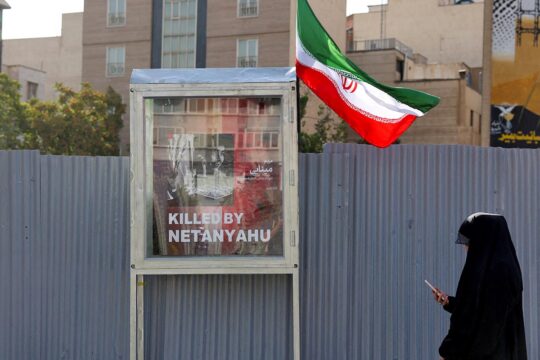Gaza has for nearly a year been the scene of massive protests and clashes between Palestinians and Israeli soldiers along its demarcation line with the Jewish state.
In that time, more than 250 Palestinians have been killed, along with two Israeli soldiers.
Here is a recap:
- First deadly day -
Protesters stage a mass rally on March 30, 2018, demanding the right to return to homes, now inside Israel, that Palestinians fled or were expelled from in the late 1940s as the Jewish state was created.
Tens of thousands of Palestinians converge along the barrier that separates Gaza from Israel.
Officially organised by civil society groups, "The Great March of Return" is backed by Islamist militant movement Hamas, which runs Israeli-blockaded Gaza.
Several groups of protesters face off with Israeli soldiers, throwing stones and Molotov cocktails.
Israeli snipers respond with live fire, killing 19 Palestinians.
- Kites on fire -
On April 6, thousands of Palestinians gather again near the security barrier. Nine Palestinians are killed and nearly 500 injured.
Four days later, the Palestinians employ a new tactic, sending kites across the border, some carrying explosive devices, to set fire to farmland.
Similar kites and balloons have since torched thousands of hectares of land and caused hundreds of thousands of dollars-worth of damage.
- Bloodbath -
On May 14, tens of thousands of Palestinians return to the barrier as the US opens its controversial embassy in Jerusalem after recognising the disputed city as Israel's capital.
At least 62 Palestinians are killed by Israeli fire in the ensuing violence, with more than 2,400 wounded.
On June 13, the United Nations General Assembly adopts a resolution, opposed by Washington, condemning Israel for the violence.
- Summer of violence -
On July 14, Israel unleashes dozens of air strikes, killing two Palestinians, while 200 rockets target Israel.
Overnight August 8-9, Hamas fires some 180 rockets and mortars from Gaza, according to the Israeli army, which says it responded by targeting 150 of the movement's military sites.
After a brief respite, 10 Palestinians are killed in clashes with the Israeli army during demonstrations on September 28 and October 5.
- Aid from Qatar -
On November 9-10, as mediation efforts progress, Palestinian civil servants in Gaza receive millions of dollars in salary arrears, funded by Qatar.
Since then, four instalments of Qatari aid have been distributed to Palestinians in Gaza.
Under UN auspices, Qatar has also financed deliveries of fuel to the territory's only power plant.
- Escalation -
On November 11, an Israeli military operation in the Gaza Strip leaves seven Palestinians and one Israeli soldier dead.
In revenge, Hamas the next day attacks an Israeli bus, severely wounding a soldier.
It is the beginning of one of the worst escalations in years, with hundreds of rockets and mortars fired at Israel and dozens of Israeli strikes against Gaza positions.
Seven Palestinians are killed.
On November 13, an Egyptian-brokered ceasefire is agreed. A day later, Israeli Defence Minister Avigdor Lieberman resigns, saying Israel is "capitulating to terror".
On November 21, four Palestinians are killed by Israeli soldiers.
- UN probe -
On February 28, 2019, a UN probe says Israel may have committed "war crimes or crimes against humanity" in responding to unrest in Gaza, as snipers "intentionally" shot civilians, including children.
Prime Minister Benjamin Netanyahu rejects the report "outright".
- Rockets and strikes -
On March 14, rockets are fired from Gaza towards the region of Tel Aviv.
Overnight, Israeli aircraft and helicopters strike dozens of Hamas targets in the Gaza Strip.
The organisers of Friday protests along the Gaza-Israel demarcation line say they are calling off this week's rallies.


